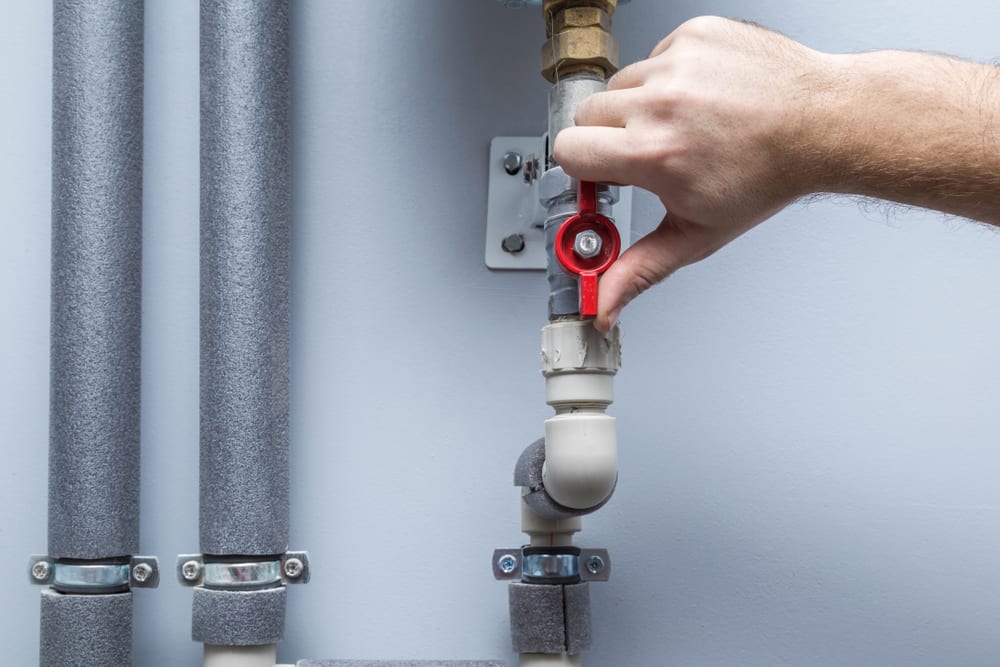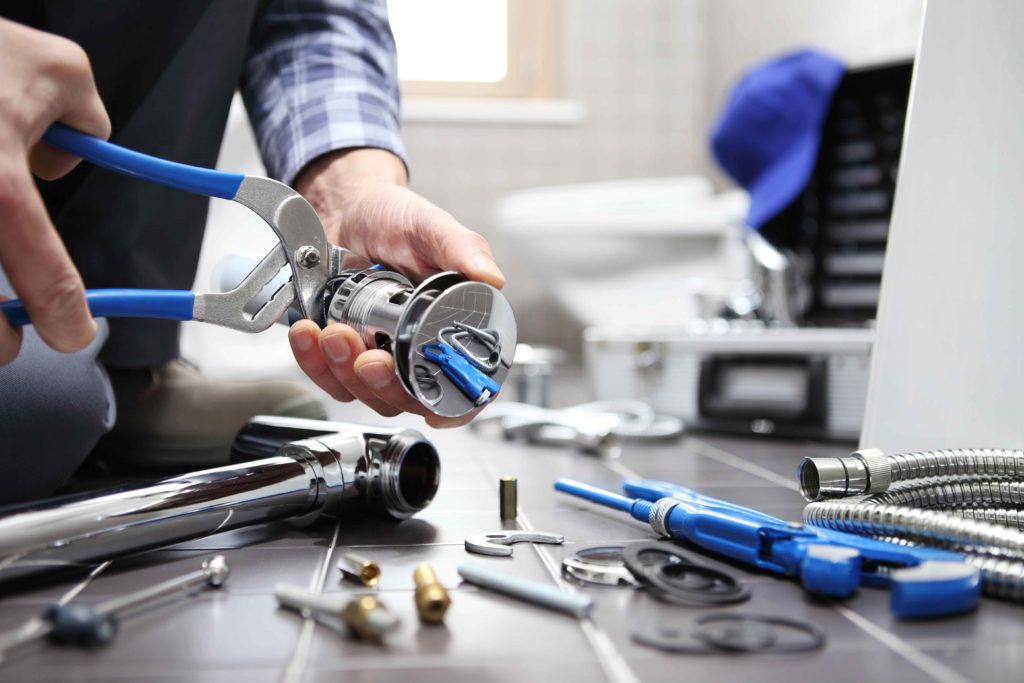The Factors Behind Fixing a Faulty Faucet
The Factors Behind Fixing a Faulty Faucet
Blog Article
We've stumbled on the article about What Causes Leaky Faucets & How To Fix Them down the page on the net and believe it made good sense to share it with you here.

Leaking faucets might look like a minor inconvenience, but their influence surpasses simply the nuisance of the noise. From wasting water to incurring unneeded economic expenses and health risks, ignoring a trickling tap can cause different consequences. In this article, we'll delve into why it's essential to address this common house problem quickly and efficiently.
Wastage of Water
Ecological Effect
Dripping taps add considerably to water wastage. According to the Environmental Protection Agency (EPA), a solitary faucet leaking at one drip per secondly can throw away more than 3,000 gallons of water each year. This not just strains water sources yet also impacts ecological communities and wildlife dependent on them.
Step-by-Step Overview to Fixing a Dripping Tap
Tools Called for
Before trying to take care of a dripping tap, gather the essential devices, including a flexible wrench, screwdrivers, replacement components (such as washers or cartridges), and plumber's tape.
Typical Tap Issues and Their Solutions
Determine the sort of faucet and the details issue creating the drip. Common problems consist of worn-out washers, rusty valve seats, or damaged O-rings. Refer to maker instructions or on the internet tutorials for detailed guidance on repair services.
Financial Costs
Increased Water Expenses
Past the environmental effect, trickling taps can inflate water expenses considerably. The built up waste with time translates into greater utility costs, which can have been avoided with timely repair services.
Possible Home Damages
In addition, prolonged dripping can result in harm to components and surfaces surrounding the faucet. Water build-up can trigger discoloration, deterioration, and also architectural issues if left unattended, resulting in extra repair service expenses.
Wellness Worries
Mold And Mildew and Mold Growth
The continuous existence of wetness from a leaking faucet produces a suitable atmosphere for mold and mildew and mold growth. These fungi not just endanger interior air top quality however likewise position health and wellness risks, particularly for individuals with respiratory problems or allergic reactions.
Waterborne Illness
Stagnant water in trickling taps can end up being a breeding ground for bacteria and various other virus, boosting the danger of waterborne diseases. Contaminants such as Legionella bacteria grow in stationary water, possibly bring about severe health problems when ingested or inhaled.
Do it yourself vs. Expert Repair
Pros and Cons of Do It Yourself Fixing
While some may attempt to deal with a leaking tap themselves, do it yourself repair work come with their very own set of challenges. Without correct understanding and tools, do it yourself attempts can aggravate the problem or lead to insufficient repairs, lengthening the problem.
Advantages of Employing a Specialist Plumber
Employing a professional plumber makes certain that the underlying reason for the trickling faucet is resolved efficiently. Plumbers have the competence and equipment to identify and fix faucet concerns efficiently, conserving time and minimizing the danger of further damage.
Ecological Responsibility
Private Payment to Preservation
Taking responsibility for taking care of dripping faucets straightens with broader efforts towards water conservation and environmental sustainability. Every person's activities collectively make a considerable influence on maintaining priceless resources.
Lasting Living Practices
By focusing on timely repairs and adopting water-saving routines, individuals add to sustainable living techniques that benefit both existing and future generations.
Preventive Measures
Routine Upkeep Tips
To prevent leaking taps, perform routine maintenance such as cleaning up aerators, evaluating for leaks, and replacing worn-out parts immediately. In addition, take into consideration installing water-saving gadgets or updating to extra efficient fixtures.
Significance of Prompt Fixes
Addressing dripping faucets as soon as they're discovered avoids additional water waste and prospective damages, inevitably saving both water and money in the long run.
Impact on Building Worth
Assumption of Well-Maintained Building
Keeping a residential or commercial property in good condition, including addressing maintenance concerns like trickling faucets, boosts its regarded worth and charm among prospective buyers or tenants.
Impact on Resale Worth
Qualities with well-kept plumbing fixtures, including taps, command greater resale values in the real estate market. Addressing trickling taps can contribute to a positive impact throughout home evaluations and negotiations.
Verdict
Dealing with a dripping tap exceeds mere ease; it's a necessary step towards saving water, decreasing economic expenses, and safeguarding wellness and home. Whether through do it yourself repairs or professional aid, doing something about it to repair trickling faucets is a tiny yet impactful method to promote accountable stewardship of sources and contribute to a much healthier, much more lasting future.
How to Fix a Dripping or Leaky Faucet
A leaking faucet is one of the most common problems that homeowners encounter, but it being commonplace doesn’t make it any less annoying. The constant drip drip drip of a leaking bathtub faucet, showerhead, or sink tap can disturb your home’s serenity. Left neglected, a dripping faucet can also result in higher water bills and discoloration or mold growth in your sink or plumbing fixtures.
Fortunately, you don’t have to be a trained plumber to know how to stop a dripping faucet. With some basic tools, replacement parts, and a little patience, leaky faucet repair is a breeze. In this article, we’ll explain what causes dripping faucets and how you can fix them.
What Causes a Leaking Faucet?
Kitchen and bathroom faucets come in all manner of designs, but most involve some combination of valves, O-rings, seals, and washers. The O-ring is usually the weakest link, but any one of these pieces can wear down over time. Heat, moisture, temperature fluctuations, minerals, mold, and movement can contribute to warping and corrosion, breaking the watertight seal. This just comes with the territory of being a homeowner. Everything is always subject to wear and tear, and some component parts of your appliances and fixtures need to be replaced on occasion. At least replacement O-rings are cheap!
More rarely, dripping faucets can be a symptom of excessively high water pressure. Were this the case in your home, you would probably notice that the leak is not isolated to one faucet. Water pressure issues are harder to resolve on your own. We recommend contacting a professional plumber if you suspect your water pressure is too high.
How to Fix a Dripping Faucet
Pipe wrench or monkey wrench Allen wrench set Screwdrivers Old towel or rag Shut off the water.
Before you do anything, you need to turn off the water to keep from drenching your kitchen or bathroom. You should find a valve under the sink and against the wall. Once you’ve turned this valve, try turning the faucet on to confirm that the water source has been cut off.
If you can’t locate your local valve for the faucet you’re working on, you can always shut off the water to the house at the main valve. Of course, this will prohibit anyone from using the sinks, showers, or toilets while you’re working on the faucet that’s giving you trouble.
Plug or block the drain.
You’ll be disassembling the faucet and removing some small bits of hardware. Plug the drain with a stopper or rag to avoid the possibility of a small screw falling into your P-trap.
Take apart the faucet assembly.
There are several varieties of kitchen and bathroom faucets, each with its own manner of assembly. For detailed instructions on how to disassemble your faucet, you can refer to the fixture’s manual or contact the manufacturer. If you know whether you have a ball, disc, cartridge, or compression faucet, you can find detailed schematics online.
In general, you need to begin by removing the faucet handles. You might notice a small screw that you’ll need to remove with a screwdriver or Allen wrench. If you don’t see any visible securing hardware, it’s likely hidden under a decorative cap that can be unscrewed or popped off with flathead screwdriver.
Remove each piece methodically, consulting a schematic when necessary. Take notes or arrange the pieces in such a way to make it easier to correctly reassemble the faucet later.
Remove the cartridge.
Once you’ve removed the handles and securing hardware, you should be able to remove the valve cartridge or stem. Some cartridges will slide right out. Other faucet models will require you to loosen a nut with a pipe wrench before you can remove the valve stem.
Examine the exposed hardware.
With the cartridge or stem removed, inspect the component parts. Check the rubber O-rings for wear and tear. Also examine the seat washer for corrosion or other damage. These pieces are usually the responsible parties for a dripping faucet, but it’s worth inspecting the other component parts while you have the faucet disassembled.
Find replacement parts.
Once you’ve identified which faucet component has failed, find an identical replacement. Your local hardware store should have O-rings, seat washers, and other standard components in stock. If you have a luxury or uncommon faucet, you may have to contact the manufacturer for a replacement part.
It’s a good idea to take your old parts with you to the hardware store so you can compare them with the store’s inventory and be sure you’re purchasing the correct replacement.
Reassemble the faucet.
With your new parts in hand, reconstruct the faucet and handles. Don’t be tempted to overtighten screws or nuts. You might think this could create a better seal, but it can instead damage or bend a delicate part of the assembly and create a new problem for you.
Turn on the water and test the faucet.
The only thing left to do is test your work. Unplug the sink, turn the water back on, and try the faucet. Congratulate yourself on a job well done!
https://www.libertyhomeguard.com/how-to-fix-a-dripping-or-leaky-faucet/

As an enthusiastic reader about Leaky Faucets: Why They Happen & What to Do About Them, I assumed sharing that portion was worth the trouble. Sharing is nice. You never know, you will be doing someone a favor. Thanks for your time. Please come by our blog back soon.
Report this page